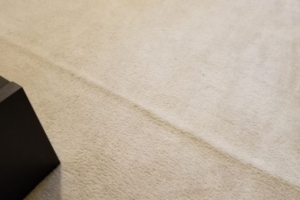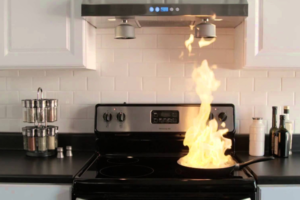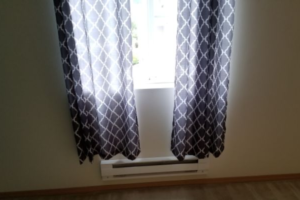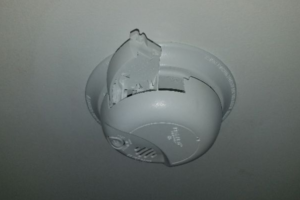Never fear, June is here- and it’s National Safety Month. Think you’ve heard it all before? Think again. It’s always good learning or refreshing how home safety can help prevent you and your family from getting hurt.
One Size Does Not Fit All
Home Safety. What comes to mind when you hear those two words together? Keeping your toddler or infant safe? Keeping your kids or teenagers safe? Keeping your elderly parents safe? The answers may vary depending on the residents and visitors of your home. Toddlers need different safety measures than teenagers, and young adults need different safety measures than elderly parents. Therefore, the first question to understanding optimal home safety is to cater to your resident –exactly who are you trying to keep safe?
Winter, Summer, Slips and Falls
According to the National Safety Council (NSC), unintentional falls cause or lead to about 30,000 deaths annually. Although all age groups are vulnerable, older adults are most at risk – approximately 80% of fatal injuries from falls are people >65.
Here’s our short list for minimizing slips and falls:
- Illuminate – Make sure living areas are well lit
- Secure handrails – Make sure stairways and bathtubs have secure handrails
- Keep floors clean – Free of grease, water, food, or rogue banana peels
-

Our inspectors discover trip hazards everywhere. Keep stairs clear – Free of clothes, toys, pets, or slinkies
- Avoid the slips – Non-slip throw rugs, rubber pads, carpet backing. We recommend these non-stick rug pads to secure your throw rugs!
- Reduce clutter – Tuck cords out of walkways, stow TV remotes. Click here for a cord organizing kit to cover all of your organizational needs!
- Play gate-keeper – Properly secure approved safety gates at top of stairs according to manufacturer instructions
- Straps and harnesses – Always strap children into highchairs
- Furniture falls – Always watch babies when on a couch or bed
- Ladder safety – If you must climb to a high place, ask someone to hold your ladder
The Ever-Present Threat of Burning Flames
According to the National Fire Protection Association (NFPA), fire departments responded to 352,000 home fires which caused 10,750 injuries, 2,735 deaths and $5.7 billion in property damage in 2016. On average, nine people died in US home fires every week over the last five years.
Top three causes of home fires? Cooking accidents, faulty heating equipment, and cigarette smoking.
If a fire does start, make sure you have fire extinguishers and/or a fire blanket on-hand to put out the flame before it is too late. We recommend this fire suppression blanket, or this budget-friendly 2-pack!
Cooking is Fun – Except When It Starts a Fire
Two of every five home fires start in the kitchen. The sad fact is that most kitchen fires are avoidable. About 1/3 of home cooking fires are caused by inattentive cooks or unattended cook-tops or ovens. The other 2/3 of fires are started because of ignition of food (yes, food catches on fire) or other cooking materials (oils and fats).
Here’s our short list for preventing cooking fires:
- Stay put while cooking – Keep a close eye on the stove when cooking and do not leave unattended
- Clear the cook-top – Keep your stove-top and oven clear of storage

It can happen in the blink of an eye. - Beware little people – Children under five face a higher risk of burns associated with hot food and drinks than being burned in a cooking fire
- Monitor the microwave – Microwaves are one of the leading appliances which cause scald burn injuries
Heating Equipment – Maintain for No Pain
The leading factor contributing to heating equipment fires also is avoidable – failure to clean creosote and other build-up from solid fuel heating equipment (chimneys). Another major factor in house fires is combustibles which ignite because they’re too close to the heater; 1/2 of home heating fire deaths resulted from fires caused by heating equipment too close to things that can burn.
Here’s our short list for preventing heating equipment fires:
- Chim, chimney, cheree – Hire a chimney sweep to clean your chimney
- Distance combustibles – Keep combustibles (upholstered furniture, clothing, mattresses, bedding) away from heat sources
- Avoid space heaters – Fixed or portable space heaters are involved in about 4 out of 5 heating fire deaths

Curtains too close to the baseboard heater. - Cord review – Check all cords for frays or cracks, which can spark and cause fires
- Service the electrics – All electrical components in your home should be serviced and monitored; about half of home electrical fires involved electrical distribution or lighting equipment
- Service the appliances – Other suspects for starting fires include washer, dryer, air conditioning equipment, water heater and range; get an annual service contract to have the equipment checked by a professional.
Bed is for Sleeping, Not Smoking
Most fires caused by cigarettes are related to a person falling asleep while smoking. Sleep-related smoking fires are a factor in almost 1/3 of home smoking material fire deaths. Don’t smoke in bed.
Ever Ready – Smoke Alarms and Escape Plans

Our inspectors report inoperable smoke alarms in dozens of homes every day, even though working smoke alarms reduce the risk of dying in home fires by 1/2. Regrettably, almost 60% of reported home fire deaths result from fires in homes with no smoke alarms or no working smoke alarms.
Click here to order smoke alarms if yours have expired or need to be replaced!
Even with working smoke alarms, accidents happen. Unfortunately, only 1/3 of households have developed and practiced a home fire escape plan, according to the NFPA. Develop and practice an escape plan. If your home is more than one-story, we recommend getting this emergency escape ladder!
Fires and Falls Haven’t Covered it All
We’ve only briefly touched upon two major home safety issues – falls and fires. There are many other areas regarding home safety which require vigilance, including home inspection issues which we report consistently – including safety issues with stairs and railings, decks, pools, and hot tubs. The good news is that proper prevention and consistently applied home safety techniques significantly reduce the probability of home safety issues.
As an Amazon Associate, we earn from qualifying purchases.
